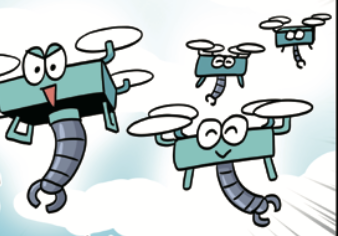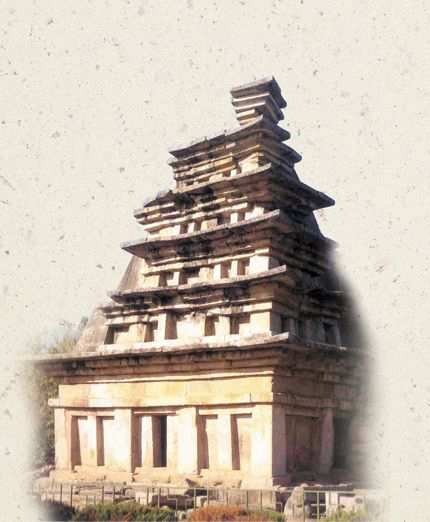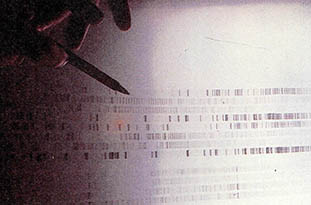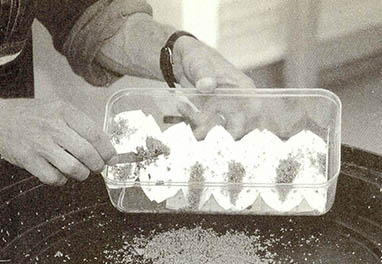
사람들은 너무 빨리 어떤 것이 나쁘다고 비난해서는 안된다고들 말한다. 또한, 나쁜것으로 판명될 수도 있는 어떤 것을 미리 좋다고 칭찬하는 것도 삼가야 한다고 한다. 최근에 몇몇 다양한 식물들에 대한 평가가 달라지고 있으므로 이 글에서는 어떤 것이 이롭고 어떤 것이 해로운가, 혹은 양쪽 모두인가에 대한 새로운 견해들을 소개하겠다.
30년 전에 클리포드 D. 시막이 쓴 '모든 육체는 풀이다'라는 소설에는 지구가 아름다운 보랏빛 꽃이 피는 외계의 식물에게 침범당하는 내용이 있다. 그 색깔과 침략 양상은 미국 동부와 캐나다에 널리 퍼져 있고(그리고 서부에도 퍼지고 있는) 눈에 두드러지게 짙은 보랏빛을 띠고 있는 보라색 좁쌀풀은 연상케 한다.
보라색 좁쌀풀은 거대한 집단을 이루어 세상을 보라색 천지로 만들곤 한다. 이 식물은 1-2m까지 자라는데, 두꺼운 줄기에는 술이 달린 잎이 달려 있고 줄기 끝에는 6개의 꽃잎으로 된 꽃이 핀 커다란 이삭이 있다. (그 경로는) 배에 실린 짐에 묻어왔거나 (이 식물이) 이질과 궤양(潰瘍)의 증상을 덜어주기 때문에 의학적 용도로 (일부러) 들여왔다.
지금은 미국의 13개 주에서 보라색 좁쌀풀은 '유해한 잡초'로 지목되고 있다. 가축들이 이 식물의 맛을 좋아하지 않기 때문에 이것은 목초지를 황폐하게 만든다. 거기다 완전히 없애는 것도 간단하지 않아서 경작지까지 못쓰게 만든다. 보라색 좁쌀풀은 여러 곳, 특히 습기가 많은 땅에서 그곳에 서식하는 동물들과 새들이 필요로 하는 다양한 식물들을 누르고 그 곳을 하나의 종(種) 만이 사는 곳으로 변화시킨다.
보라색 좁쌀풀은 일년에 한 개체당 수백만개의 단단한 씨앗을 만들어내는 끈질긴 생존자다. 이것은 여러해살이 풀이기 때문에 봄이 오면 다시 자라난다. 잘라낸다 해도 강인한 뿌리로부터 쉽게 다시 자라난다. 이 식물을 효과적으로 없앨 수 있는 토착벌레나 병원균, 혹은 초식동물도 전혀 없다. 제초제조차 잘 듣지 않고 주변의 환경을 황폐하게 만드는 역할만 할 뿐이다.
생물학자인 리차드 A. 말렉키와 그의 동료 연구자들은 보라색 좁쌀풀 문제를 해결할 방법이 있다고 말한다. 이들은 최근의 논문에서 이 식물의 각기 다른 부위를 공격하는 유럽산(産) 곤충을 수입하는 것이 효과적일 뿐만 아니라 안전하기도 하다고 주장했다.
'나노피스 마르모라투스'와 '나노피스 브레비스'는 보라색 좁쌀풀의 꽃을 먹어치움으로써 씨가 만들어지는 양을 줄여준다. '힐로비우스 트란스베르비타투스'는 뿌리를 갉아먹는 바구미의 일종이다. '갈레루켈라 칼마리엔시스'와 '갈레루켈라 푸실라'는 입을 먹는 딱정벌레다.
과학자들에 따르면 생물학적 통제방법의 역사에서 곤충을 도입했을 때 어떠한 토착 생물종이나 농작물에 대해서도 심각한 전염병을 유발한 경우는 없었다고 한다. 현재 진행되고 있는 실험들에서 딱정벌레는 그 임무를 잘 수행해서 보라색 좁쌀풀의 수를 통제 가능한 비율까지 감소시켰다. 그 결과 침략자에 의해 모두 정복당한 (획일적) 풍경 대신 다양한 경관을 가진 쾌적한 지역이 되었다.
유해한 식물이라고 더 널리 알려진 것은 '푸에라리아 로부투', 즉 칡이다. 이는 아시아산(産) '녹색의 골칫거리'라고 할 만하다. 이 덩굴 잡목은 매혹적인 녹색의 잎을 달고 있고 역시 적보랏빛 꽃이 핀다.(시막이 옳았던 것일까?) 칡은 19세기에 일본 주재 미국 영사였던 토마스 호그가 미국으로 가지고 왔다. 1876년 필라델이피아 1백주년 기념행사에서 이 식물이 처음 소개되었고 플로리다주의 농부였던 플리스에 의해 널리 퍼졌다.
가축들은 칡을 좋아하고 영양도 풍부하다. 미관상 보기도 좋고 그늘을 제공하기도 한다. 또, 질소를 고정할 뿐만 아니라 흙이 유실되지 않도록 한 곳에 잡아놓는 데도 좋다. 그래서 미국토양 보존국은 침식을 방지하기 위해서 7천3백만 그루의 칡 묘목을 미국 남부에 심었고 이러한 식림(植林)사업은 1942년까지 계속되었다. 그 이후 칡은 남부에서 위협이 되어가고 있다는 것이 분명해졌고 점점 북부까지 점령하기 시작했다.
칡이 씨를 만들기 위해서는 길고 따뜻한 여름이 필요하다. 그런데 어떻게 칡들이 성공적으로 북쪽 지방에서 옮겨 살 수 있을까? 비밀은 수가 많고 끈질기며 추위에 잘 견디는 칡의 뿌리에 있다. 땅 위의 부분이 추위나 사람들의 제초 작업으로 잘려죽더라도 뿌리는 봄에 새싹을 틔울 수 있다. 또한 이 식물은 하루에 1피트(약 30cm)씩 자라는 덩굴을 뻗어 어디에든 닿을 수 있다. 덩굴은 마디를 가지고 있고 각 마디에서 뿌리가 뻗어나와 새로운 개체가 된다. 씨가 무슨 필요가 있겠는가?
칡은 농경지 숲 가옥 전신주 등 모든 곳을 뒤덮어서 많은 손상을 야기시킨다. 그래서 30년 전부터 사람들은 칡에 제초제를 사용하기 시작했다. 예를 들어 토르돈 같은 것은 잘 들었다. 하지만 이 제초제 또한 2년만에 경작지를 황폐하게 만들었다.
보라색 좁쌀풀의 경우와 달리 칡에 대해서는 어떠한 적절한 생물학적 통제도 가능하지 않은 것으로 보인다. 그러나 보라색 좁쌀풀과는 달리 칡은 쓸모가 있는 식물이다. 일본인들이 2천년간 그렇게 생각해왔듯이. 아시아에서는 칡으로 종이와 옷을 만들고 가축을 먹이며 토양을 기름지게 하는데 사용되었다. 알라바마주의 어번대학 원예학 명예 교수인 해리 아믈링 박사에 따르면 일본인들은 이 식물로부터 해열제를 뽑아내기도 한다고 한다. 또한 최근에 하버드의대 연구자들은 칡뿌리의 즙이 알코올 중독자들로 하여금 술을 끊게 하는데 유용하다는 고대 중국인의 발견이 옳았다는 것을 확인했다.
칡은 사람들이 먹기에도 좋다. 이 뿌리는 채소로 요리되거나 차로 만들어지기도 하며 국수 밀가루를 만드는 데도 사용된다. 지금 미국에서 먹고 있는 칡 밀가루는 일본에서 수입하는 것인데 그 값이 싸지 않다.
모든 '유해한 잡초'에 대해서 어떤 동물에 의한 생물학적 통제가 필요하다. 딱정벌레 대신 우리 스스로 이 녹색의 골칫거리를 거두어 들이는 것은 어떨까?
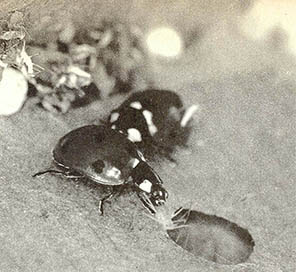
We're told we should not be too quick to condemn something as bad. We're also told we should not praise something as good when ti might turn out tn be bad. The score cards on some varieties of plants have undergone change in recent years, so here's the news on what's bad, good, or both.
In Clifford D. Simak's novel "All Flesh Is Grass," written 30 years ago. Earth in invaded by an alien plant bearing flowers of a beautiful purple. The color and the invasion remind me of Lythrum salicaria, or purple loosestrife, which grows in showy and very purple profusion throughout much of the eastern United States and Canada(and is spreading west).
Purple loosestrife tends to grow in huge groups that form a blaze of purple. On thick stems, each plant grows to 1 or 2meters, with hairy leaves and a big "terminal spike" of six-petalled flowers. The plant arrived from Europe nearly 200 years ago as ballast in the holds of ships, or was supposed to relieve conditions like dysentery and ulcers.
In 13 American states purple loosestrife is now labeled a "noxious weed." Livestock do not like its taste, so it ruins grazing land. Since it's hard to exterminate, it ruins crop lands. It tums many areas--especially wetlands--into a one-species habitat without the plant diversity needed by native animals and birds.
Purple loosestrife is a ferocious survivor, with millions of hardy seeds produced per plant per year. It's a perennial, so come spring, there it is again. If mowed, it simply regrows from its equally tough rootstock. And there are no native bugs or germs or plant-eating animals that can effectively get rid of the plant. Herbicides don't work well and play havoc with the rest of the environment.
A solution to the purple loosestrife problem is possible, according to biologist Richard A. Malecki and his co-workers, In a recent paper he states that it is not only effective but safe to import European insects that each attack a different part of the plant.
Nanophyes marmoratus and Nanophyes brevis reduce seed foramation by eating the flowers of the purple loosestrife. Hylobius transversovittatus is a root mining weevil. Galerucella calmariensis and Galerucella pusilla are leaf-eating beetles.
Scientists say that in the history of biological control methods, introduced insects have never become serious pests of any native species or crop plants. According to experiments now under way, the beetles work well and should reduce the numbers of purple loosestrife to manageable proportions--a pleasant part of a diverse landscape instead of an all-conquering invader.
There's another and much better known "bad" plant--Pueraria lobatu, or kudzu, the Asian "green menace." This woody vine has attractive green leaves and--again red-purple flowers (was Simak right?). In the 19th century Kudzu was brought th the United States by Thomas Hogg, the American Consul in Japan. In 1876 it was shown at the Philadelphia Centennial and then strongly promoted by a Florida farmer named C.E.Pleas.
Livestock liked and were well-nourished by kudzu. It was ornamental and provided shade. It not only fixed nitrogen but was so good for holing soil in place that the U.S.Soil Conservation Service planted 73 million kudzu seedlings in the southern United States to control erosion, and went on planting until 1942. By then, it was obvious that kudzu was becoming a menace in the south, and that it was moving north.
Considering that kudzu requires long warm summers in order to produce its seeds, why has it successfully colonized northern areas? The secret it the kudzu's enormous, tenacious, and cold-proof root system. No matter how much of the above-ground plant is killed off by winter or human cutting, the root in there to send up shoots in spring. The plan also travels by sending out vines that can grow a foot a day. These vines have nodes that produce roots, and hence new plants. Who needs seed?
Kudzu covers everything agricultural land, timber, houses, telephone poles--and causes all sorts of damage. Thirty years ago people began to use herbicides on kudzu. Tordon, for instance, works. It also ruins crop lands for two years.
There doesn't seem to be any adequate biological control for kudzu, but unlike purple loosestrife, it is useful, as the Japanese have known for 2,000 years. In Asia, kudzu is made into paper and cloth, fed to livestock and turned into fertilizer. According to Dr. Harry Amiling, professor emeritus of horticulture at Auburn University in Auburn, Alabama, the Japanese also extract an anti-fever medicine from the plant. Also recently, Harvard Medical School researchers have confirmed the ancient Chinese finding that Kudzu root extract is useful for helping alcoholics stop drinking.
Kudzu is good eating for humans, too. The roots are cooked as a vegetable or for tea, and ground up to make flour for noodles.
Right now the kudzu flour eaten in the United States come from Japan, and is not cheap.
Every "noxious weed" needs to be controlled biologically, by some animal. In lieu of beetles, how about harvestion the green menace ourselves?
(C)1994, Los Angeles Times Syndicate





